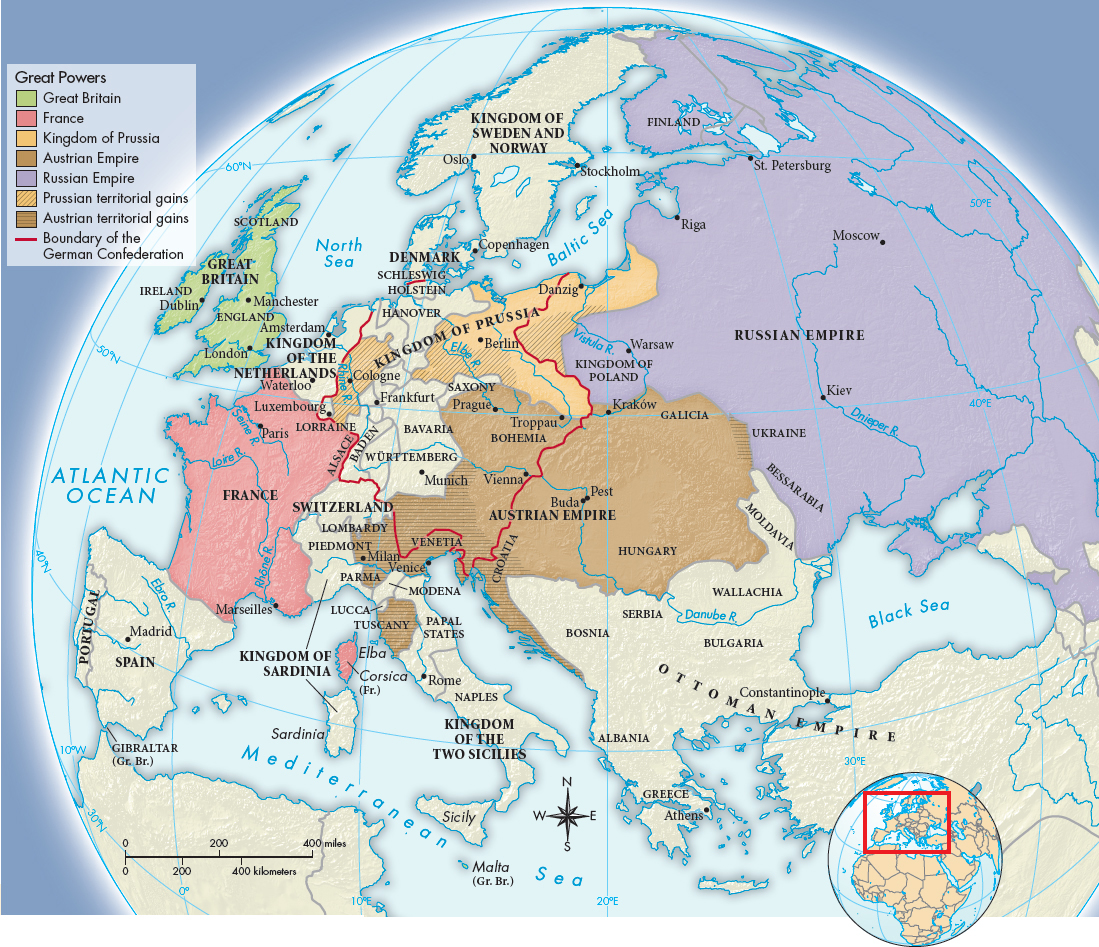A History of World Societies:
Printed Page 716
A History of World Societies Value
Edition: Printed Page 723
A Conservative Peace Gives Way to Radical Ideas
How did the allies fashion a peace settlement in 1815, and what radical ideas emerged between 1815 and 1848?
The eventual eruption of revolutionary political and economic forces was by no means certain as the Napoleonic era ended in 1815. Quite the contrary. After finally defeating Napoleon, the conservative aristocratic monarchies of Russia, Prussia, Austria, and Great Britain — known as the Quadruple Alliance (see Chapter 22) — reaffirmed their determination to hold France in line. But many other international questions remained, and the allies agreed to meet at the Congress of Vienna to fashion a general peace settlement. The great challenge for political leaders in 1814 and 1815 was to construct a settlement that would last and not sow the seeds of another war. By carefully managing the European balance of power and embracing conservative restoration, they brokered an agreement that contributed to fifty years without major warfare in Europe (see Map 24.1).

In the years following the peace settlement, intellectuals and social observers sought to harness the radical ideas of the revolutionary age to new political movements. Many rejected conservatism, a political philosophy that stressed retaining traditional values and institutions, including hereditary monarchy and a strong landowning aristocracy. Radical thinkers developed and refined alternative visions — alternative ideologies — and tried to convince society to act on them.